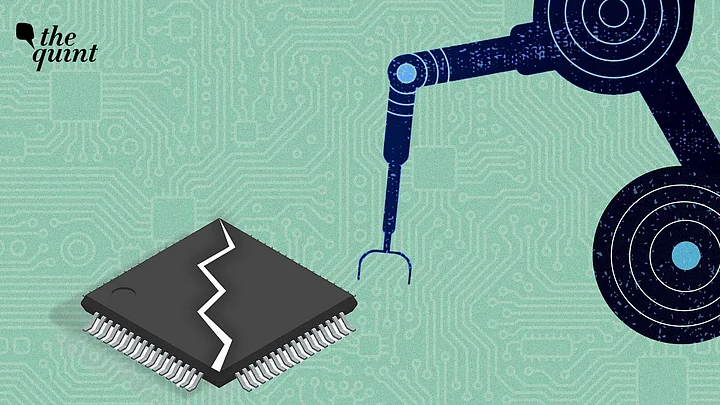The global chip shortage, which began in 2020, is likely to continue for longer than we thought because chip manufacturers – and the 169 industries that Goldman Sachs says are dependent on them – are facing a new problem.
There's a shortage of chips required to build semiconductor manufacturing equipment – the machines that help make chips.
Intel's CEO, Pat Gelsinger, recently told CNBC that the company has revised its expectations for when the shortage will end.
"We believe the overall semiconductor shortage will now drift into 2024, from our earlier estimates in 2023, just because the shortages have now hit equipment and some of those factory ramps will be more challenged," he said.
“There’s this wishful thinking that by the end of 2022, supply will be balanced with demand. I just don’t see it," Tom Caulfield, CEO of chip manufacturer GlobalFoundries told The Wall Street Journal.
Equipment Makers Become Priority Customers
Even though the chips used in semiconductor manufacturing equipment (SME) account for less than 1 percent of the global semiconductor market, according to SEMI Research, the entire chip-making industry is dependent on this equipment.
The wait time to get this equipment, however, has reportedly been increasing over the past several months.
When the pandemic began, it took a few months from placing an order to receiving the equipment. Now it is expected to take two or three years, industry insiders told WSJ. Deliveries of previous orders have also been delayed, they added.
As a result, some chip-makers have reportedly started treating chip-equipment suppliers as high-priority customers.
“We have taken the posture that if any equipment manufacturer identifies a specific microchip product that is a bottleneck for them, it goes right to the top of our priority list," Ganesh Moorthy, CEO of Microchip Technology, told the publication.
One of the reasons behind this preferential treatment is the so-called multiplier effect. While the volume of semiconductors required to build chip-making equipment is small, the tools enable the production of a very large number of chips.
"A typical MCU (microcontroller unit) Tester needs approximately 100 FPGAs (specialised chips) to be manufactured, but that tool can then test nearly 10 million MCUs in a year, a multiplier effect of ~100,000x."Ajit Manocha and Sanjay Malhotra, SEMI Research
Apart from SME, supply-chain troubles in essential chemicals, hiring labour for new factories, and a shortage of substrates – which help transmit user instructions to chips – are other issues that prevent the scaling up of chip making, manufacturers told WSJ.
Ripping Chips Out of Washing Machines
Semiconductor chips, also known as microchips or integrated circuits, are becoming increasingly vital. Nearly every industry, from consumer electronics to healthcare, has been affected by the shortage.
The automotive industry, for example, has seen carmakers cut their output targets drastically, leading to ever longer waiting periods and missing features.
Things have gotten so bad that industry players have resorted to buying washing machines and ripping out the semiconductors to use them in their own modules, according to Peter Wennink, CEO of ASML Holdings, a company which makes lithography equipment used by chip-makers like TSMC and Samsung.
"I met the executive of a very large industrial company, a conglomerate, last week, and actually they told me that they're buying washing machines to rip out the semiconductors to put them in industrial modules. I mean, that's happening these days."Peter Wennink, ASML Holdings, in an earnings call
Manufacturing chips is a complex process that takes over three months. Silicon is extracted from sand and melted into solid cylinders called ingots, which are then sliced into very thin wafers and imprinted with intricate circuits.
The wafers are then cut into individual semiconductors and packaged into finished chips, which can then be placed on a circuit board.
COVID-19 forced a significant portion of the population indoors, leading to a sudden increase in the demand for consumer electronics. Meanwhile, carmakers lowered their chip orders at the start of the pandemic, wrongly assuming that consumers wouldn't be interested in buying new vehicles.
Demand rose, but supply fell.
Tense relations between the United States (US) and China, and the Russia-Ukraine crisis also played a part in throttling supply. While chipmakers have now woken up to the problem, setting up new fabrication plants from scratch takes years.
Compounded by the fact that there's now a dearth of chips for making semiconductor manufacturing equipment, the world might continue to struggle with this shortage for years.
(With inputs from CNBC, The Wall Street Journal, and Semiconductor Engineering)
